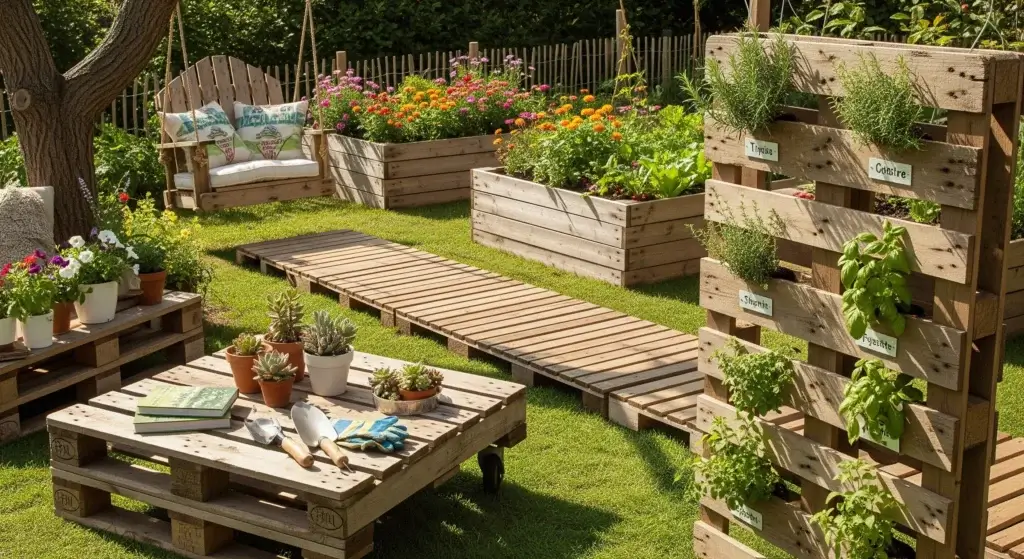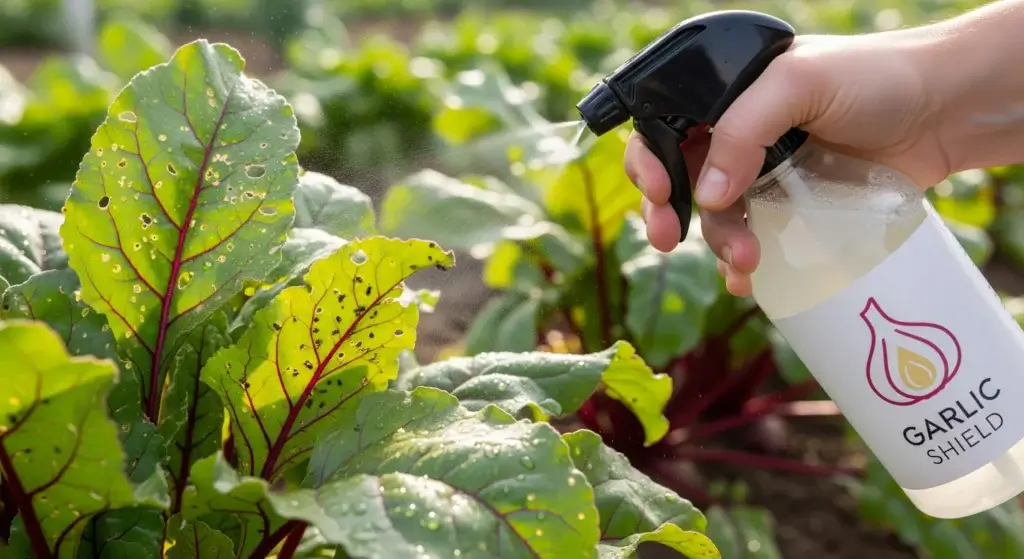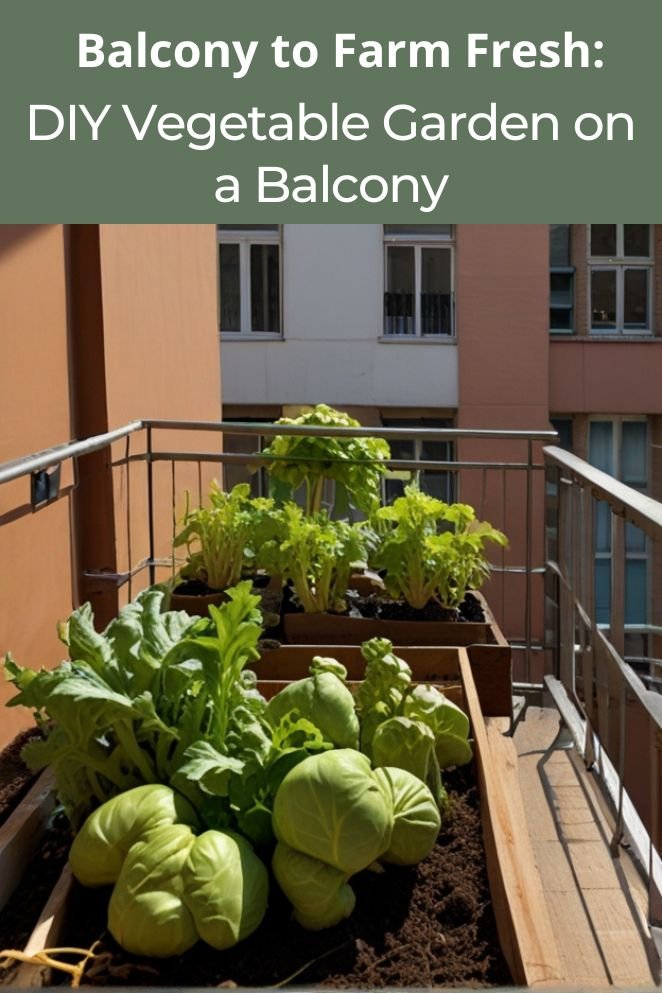
Growing your own vegetables on a balcony can be a rewarding experience, providing fresh produce and a sense of accomplishment.
In this blog post, we’ll explore how to plan, set up, and care for a DIY balcony garden, focusing on the importance of sunlight assessment, container selection, and vegetable choices.
Planning Your Balcony Garden
Planning your balcony garden requires careful consideration of several factors to ensure successful growth and healthy plants.
Here’s how you can go about it:
- Read also: Grow Your Own! DIY Vegetable Garden for Beginners
- Read also: DIY Vegetable Garden For Small Spaces
Sunlight assessment
Start by assessing the sunlight availability on your balcony.
Different vegetables have varying sunlight requirements. Some thrive in full sun, while others prefer partial shade.
Take note of how much direct sunlight your balcony receives throughout the day to determine which vegetables will grow best.
Choosing the right vegetables
Based on your sunlight assessment, select vegetables that are suitable for your balcony’s conditions.
For balconies with ample sunlight, consider growing tomatoes, peppers, and leafy greens like spinach or kale.
If your balcony receives partial shade, opt for vegetables such as lettuce, radishes, and chard, which can tolerate less sunlight.
Container selection
Choose containers that are appropriate for the size of your balcony and the vegetables you intend to grow.
Pots, raised beds, and hanging planters are all excellent options for balcony gardening.
Make sure the containers have sufficient depth to accommodate the root systems of your chosen vegetables.
Drainage
Proper drainage is essential for the health of your plants.
Ensure that your containers have drainage holes at the bottom to prevent water from pooling and causing root rot.
Additionally, consider adding a layer of gravel or small stones at the bottom of your containers to improve drainage and prevent soil compaction.
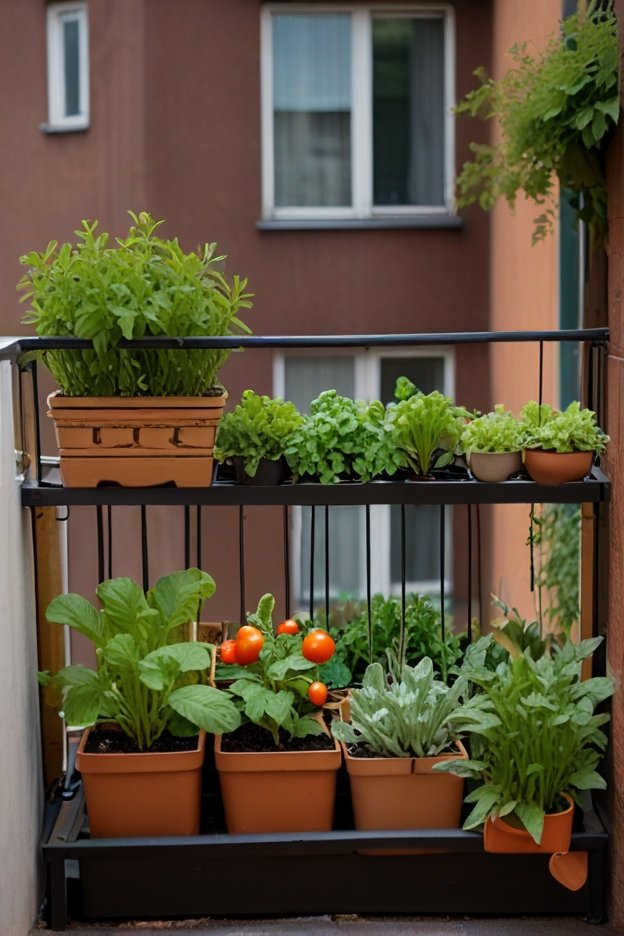
Setting Up Your Balcony Garden
Setting up your balcony garden is an exciting step towards growing your own fresh vegetables right at home.
Here’s a detailed guide on how to get started:
Preparing the containers
Before you can plant anything, it’s essential to prepare your containers.
Choose containers that are large enough to accommodate the root systems of your vegetables and have proper drainage holes at the bottom.
Fill the containers with a high-quality potting mix specifically formulated for vegetables.
This mix should be well-draining and nutrient-rich to support healthy plant growth.
Planting your seeds or seedlings
Once your containers are prepared, it’s time to plant your vegetables.
You have two options: starting from seeds or transplanting seedlings.
If you’re starting from seeds, follow the instructions on the seed packets regarding planting depth and spacing.
For transplanting seedlings, gently remove them from their nursery containers and place them into the prepared soil at the appropriate depth.
Be sure to water them thoroughly after planting to help them settle into their new homes.
Trellising (optional)
If you’re growing climbing vegetables like tomatoes, cucumbers, or beans, consider using trellises to support them.
Trellises help save space and encourage vertical growth, which can improve airflow and reduce the risk of disease.
Install the trellises according to the specific requirements of the vegetables you’re growing, ensuring they’re sturdy enough to support the weight of the plants as they grow.
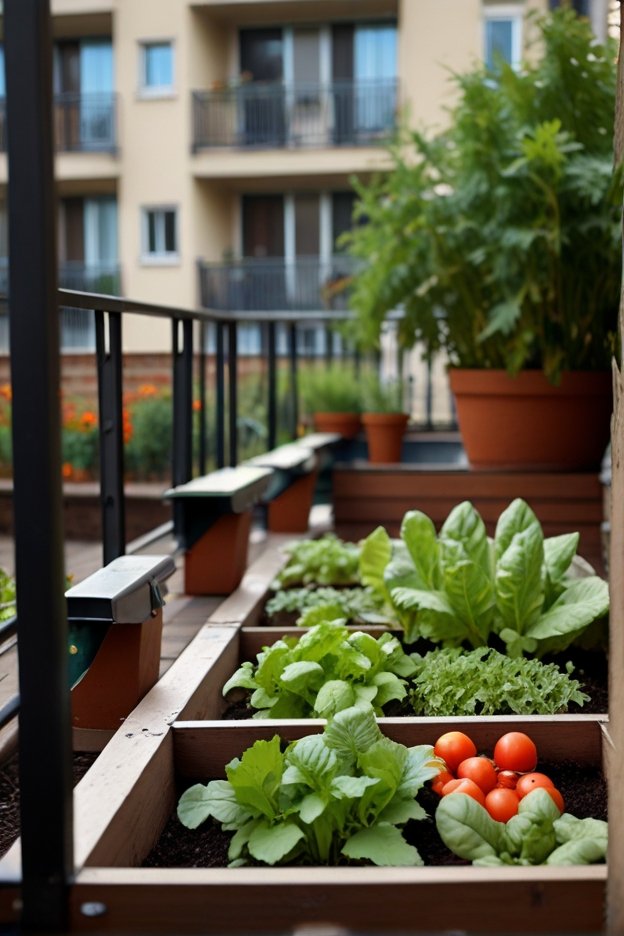
Caring for Your Balcony Garden
Caring for your balcony garden is essential to ensure the health and productivity of your vegetables.
Here’s how you can effectively care for your plants:
Watering
Regular watering is crucial for the health of your vegetables, especially in container gardens where soil can dry out quickly.
Check the moisture level of the soil regularly and water your plants as needed.
The frequency of watering will depend on factors such as weather conditions, the size of your containers, and the type of vegetables you’re growing.
On hot days, you may need to water more frequently, while cooler weather may require less frequent watering.
It’s essential to water deeply to encourage healthy root growth but avoid overwatering, as this can lead to root rot.
Feeding
To ensure your vegetables have access to essential nutrients, fertilize them regularly with a balanced fertilizer formulated for container gardens.
Follow the instructions on the fertilizer package carefully to avoid over or under-fertilizing your plants.
Generally, it’s best to fertilize your vegetables every few weeks during the growing season, starting a few weeks after planting.
This will help promote healthy growth and abundant harvests.
Pest management
Keep an eye out for pests that may try to invade your balcony garden, such as aphids, caterpillars, and mites.
Employ organic pest control methods to protect your plants without harmful chemicals.
Companion planting, where you plant certain flowers or herbs alongside your vegetables to repel pests, can be effective.
Additionally, you can use insecticidal soap or neem oil to deter pests if they become problematic.
Regularly inspect your plants for signs of pest damage and take action promptly to prevent infestations from spreading.
Pollination
Many vegetables rely on pollinators like bees, butterflies, and other insects to produce fruit.
If you’re growing fruits or vegetables that require pollination, such as tomatoes, peppers, or cucumbers, you may need to take steps to encourage pollination in your balcony garden.
This can involve hand pollinating your plants by gently shaking them or using a small brush to transfer pollen between flowers.
Alternatively, you can attract pollinators to your balcony garden by planting flowers that they are attracted to, such as marigolds, lavender, or zinnias.
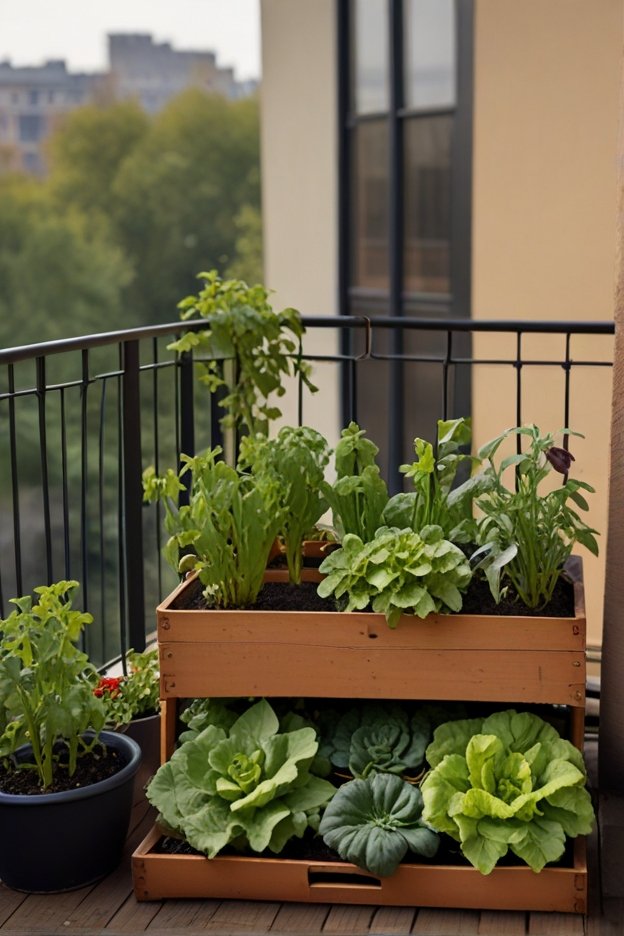
- Read also: Sustainable Style: DIY Garden Decor Ideas From Old Tires
- Read also: DIY Plant Covers for Winter: Protect Your Greenery
Conclusion
Growing a DIY vegetable garden on your balcony can be a fun and rewarding experience.
By considering sunlight availability, choosing the right vegetables, and selecting appropriate containers, you can create a thriving balcony garden.
Remember to water, feed, and care for your plants to ensure a bountiful harvest.
FAQs
Vegetables like tomatoes, peppers, lettuce, radishes, and chard are suitable for growing on a balcony, depending on the sunlight conditions.
Use containers with drainage holes and add a layer of gravel at the bottom of the container to improve drainage.
Water your balcony vegetables regularly, adjusting the frequency based on weather and plant needs.


